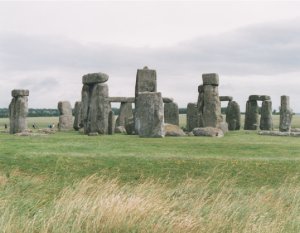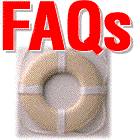How to Organize a Research Paper and Document It with MLA Citations

This web site is written for beginning writers. It refers
students to important web sites on the Internet. It also
attempts to help them organize a research paper and document
its sources in a bibliographic format recommended by the
Modern Language Association, MLA.
Note: All titles are shown in italics. Some teachers may prefer that you underline the titles.
To access the site map click HERE
Modern Language Association style (MLA) requires that you have a heading
on the first page of your paper and that a list of resources utilized
in your paper appear at the end. The title Works Cited should be
centered one inch from the top on the last page of the paper. Double space
between the title and the first entry. Double space within and between entries.
MLA format requires the second line of the citation to be
indented five spaces.The indentations shown on this web site
are an approximation
of a five space indentation.
View a sample heading
View a sample works cited page
Table of Contents
Resources
A Research Paper is a Tree
Click below to learn how to organize your research paper- The Outline Tree
This web page will discuss how to organize a
research paper and how to prepare documentation for MLA
citations. It will illustrate the outlining process with an
analogy comparing a research paper to a tree. The reader may
then click the indicator to see an example outline that follows
the analogy.

It's easy to think of a well written essay
The Outline Tree
the local library, consider searching the Library of Congress.
You may be able to order the book through interlibrary loan.
Your local librarian can advise you as to the procedure.
Use the site at : http://www.loc.gov to search for a book
on your subject.
Yahoo Reference Dictionary
The Dictionary of Difficult Words
Think of your outline for the paper as a tree
A research paper is a combination of facts and
THE INTERNET'S POPULARITY IS ASSURED DUE TO
Titles of books, magazines, and newspapers should be shown
as a healthy tree with its roots deep in the ground.
If your research is strong, your paper
will flourish because it will be founded upon
well grounded ideas. Your thesis or hypothesis
forms the trunk of the tree. All of your
proof will branch off from this point.
Your main ideas that support the thesis will be
the branches, and the examples you give to
discuss and explain the main ideas will be
the twigs.
Click below to learn how to organize your research paper-
Research Sites
Popular Sites for Research
Literary Links
Historical Links
These links will change periodicallyIf you cannot find a book or a magazine about your topic in
Click Here to access the Library of Congress Catalog
On-Line Dictionary
Or try this link to challenge yourself!THE OUTLINE TREE
with bare branches.
After you have chosen your
thesis (trunk) and your main ideas (branches).
You will add the --
1.twigs (supporting ideas)
2. and the leaves (details).

opinions. Your thesis statement is an opinion,
but you have to support it with facts in order
to convince the reader
that your argument is valid.
Thesis: This statement belongs in your first
paragraph. The thesis is the point
that you are going to argue in your paper.
Branches: The main ideas that support the thesis.
Twigs: The supporting ideas and the details (leaves) that
develop from the main ideas (branches).
Conclusion: A restatement of the strongest points
of your argument.
Your thesis or hypothesis
forms the trunk of the tree. All of your
proof will branch off from this point.
Your main ideas that support the thesis will be
the branches, and the examples you give to
discuss and explain the main ideas will be
the twigs and leaves.
TRUNK (OR THESIS)
THE INTERNET IS EMERGING AS A POPULAR FORM OF INTERACTIVE
WORLD WIDE COMMUNICATION THAT MIRRORS AND SUPPLEMENTS
THE ROLE OF THE TELEVISION IN OUR SOCIETY.BRANCHES
THE MOST IMPORTANT POINTS (MAIN IDEAS) YOU CAN
MAKE TO SUPPORT THE THESIS. FOR EXAMPLE:
1. The Internet Entertains.
2. It Informs And Educates.
3. It Advertises Goods and Services.TWIGS:
SUPPORTING IDEAS WHICH WILL BE USED TO DISCUSS
THE MAIN IDEAS ( BRANCHES).
BRAINSTORMING YOU CAN DO TO SUPPORT YOUR MAIN IDEAS.
THEM INTO A COHERENT ESSAY.
TWIG 1:
ENTERTAINMENT
ABOUT SPORTS, GAMES, MOVIES AND FASHION TO ITS USERS
IN A MULTIMEDIA ENVIRONMENT.
IT PROVIDES ENTERTAINMENT IN THE SAME CATEGORIES
OF INTEREST.
ON THE NET, THE ENTERTAINMENT IS STORED ON VARIOUS
SERVERS AND CAN USUALLY BE CALLED UP AT ANY TIME.
COMPILING TELEVISION RATINGS, HAS DETERMINED THAT
51% OF THE INTERNET'S USERS SEEK ENTERTAINMENT ON
THE INTERNET.
TWIG 2:
INFORMATION AND EDUCATION
FOR STUDENTS. THEY MAY ALSO PROVIDE INTERACTIVE
PRACTICE EXAMS FOR STUDENTS TO TAKE ON-LINE.
ON-LINE SERVICES PROVIDE HOMEWORK HELP FOR STUDENTS.
AND JOURNALS PROVIDE UP TO DATE INFORMATION
ABOUT BUSINESS, THE ECONOMY AND CURRENT EVENTS.
INFORMATION ABOUT STOCKS, BONDS AND MUTUAL FUNDS.
USERS UPDATE THEMSELVES WITH NEWS AND CURRENT EVENTS
ON LINE. 26% SEEK FINANCIAL INFORMATION ON LINE.
IN THAT THE CONSUMER PLAYS A GREATER ROLE IN CHOOSING
THE INFORMATION TO WHICH HE OR SHE WILL BE EXPOSED.
TWIG 3:
ADVERTISING
AND CLOTHING RETAILERS AS WELL AS SMALL BUSINESSES
AND COMPUTER SOFTWARE ENTREPRENEURS ADVERTISE GOODS
AND SERVICES VIA THE WORLD WIDE WEB.
COST ADVERTISING BY MAINTAINING A WEB SITE. MANY LARGE
BUSINESSES ADVERTISE ON THE WEB AS WELL AS ON T.V.SOME
COMPANIES ALLOW CUSTOMERS TO SELECT MERCHANDISE ON-LINE.
ON T.V. THEY HELP GAIN RECOGNITION FOR THE COMPANY OR ITS
PRODUCTS.CONCLUSION
THE WIDE VARIETY OF INFORMATION AND SERVICES AVAILABLE TO
ITS USERS. NOT ONLY DOES IT PROVIDE VISUAL ENTERTAINMENT
SIMILAR TO TELEVISION, BUT IT ALSO BRINGS TO THE USER A
GREATER SELECTION OF MATERIAL TO VIEW AND TO CHOOSE FROM.
THE CONSUMER, THEREFORE, BECOMES AN INTERACTIVE PARTICIPANT
RATHER THAN A PASSIVE RECEIVER OF INFORMATION.
document research in the Modern Language Association
style for writers of research papers.
TO TOP OF SITE
Citing Material from Conventional Sources
in italics or underlined. Here is an example of how to cite
a book, magazine or newspaper using the
MLA format.Mossberg, Walter. "A Mall World, After All."
Smart Money April 1996: 152-54.
Here is the order of references in the preceeding
Author's Last Name, First Name."Title of Article."
Title of Magazine or Newspaper Day
Month Year of Publication: page(s).
Here is an example of how to cite a book using MLA format.

Williams, Bard. The Internet for Teachers. Foster City, CA: IDG, 1995.
Here is the order of references in the
proceeding MLA citation.
Author's Last Name, First Name. Title of Book.
City of Publication, State of Publication:
Publisher, Copyright date.
If you have two authors for a book, invert
only the first name. For example: Smith, Tom,
and Marcy Jones.
Note: The state of publication is cited only if the city
is not well known. If the city of publication is well known,
cite only the city of publication.
(for example New York: Knopf, 1989).
If you are citing from an anthology, you must
cite the title of the selection, the editor, and the edition.
List the total number of volumes and cite the volume you are using within a parenthetical in the text of your paper. example: volume 2 page 151 (2:151). If you are are using only one volume, cite the specific volume number in the works cited section, and the page number only in the parenthetical (151).
(see example below)
Wordsworth, William. "Tintern Abbey." The
Norton Anthology of English Literature.
Ed. M.H. Abrams. 5th ed. vol. 2 New York:
Norton, 1986.
TO TOP OF SITE
Use the following format to cite an encyclopedia.
Smith, John. "Bats."Academic American. 1995 ed.
Here is the order of references in the preceeding citation.
Author's Last Name, First Name."Title of Article."
Title of Encyclopedia. Year of Edition.
Citing Information
found on the Internet

Gibaldi, Joseph. MLA Handbook for Writers of
in the preceding MLA citation. Note that you do not use a period after the title of a magazine, journal, or newspaper.
Last Name of Author, First Name. The Title of article in quotes.
The Magazine or Newspaper in which the article was first published.
The date of original publication. The date of access.
The URL.
The previous citation included the following references:
The Last Name of the Author, First Name."The Name
of the Article."The Title of the CD-ROM. Medium (CD-ROM).
The Version or Edition. The Place of Publication. The Publisher
and Date of CD-ROM.
If you do not have all of the information that is required,
cite what you have.
Internet Databases
The Last Name of the Author, First Name. "Title of the Article."
The Magazine in which the Article first appeared. The Date of
publication: The page the article starts on
(The plus indicates that the article is more than one page).
The database. The service,
(Ebscohost in this example). The place, and city of access.
The date of access.
Click the exit sign to return to the list of popular
research sites and the outline tree.
Students need to be aware of how to cite
information which is found on the Internet.
You can buy the 6th edition of the MLA
Handbook for a reasonable price.
To buy the book go to
Click on publications and then
MLA Handbook "Research Papers. 6th ed. New York: MLA, 2003.
Internet Personal Site or Home page
Last name of author, first.Name of page or home page. Date of latest
revision. Date of access Web address.
Capley, Suzanne. Jane Austen's Works. 1 Sept. 2000. 4 Sept. 2000
http://members.aol.com/suze.htm
Citing Journals
(Daily Newspapers
and other Periodicals)
that appear on the Internet

Elliott, Stuart. "Nielsen Unit Offers Data
About Internet Users." New York Times
22 July 1996. 22 Sept. 1996
http://www.nytimes.com/library/articles/users.html.
Here is the order of references
TO TOP OF SITE
Citing CD-ROMS and Diskettes
Kennedy, Lauren. "Emily Dickinson." Grolier Multimedia
Encyclopedia. CD-ROM. Macintosh ed.1997.
Danbury, CT: Grolier, 1997.
Citing Periodically Updated
For example: Academic Search EliteHinrichsen, Don."Nepal --A Common Future." Populi
The previous citation included the following references. March 1992:178+. Academic Search Elite. Ebscohost Web.
Kean University Library, Union. 11 Oct. 2000.
Beginning Writer's Checklist
and a conclusion?
works cited section?
WORDS OF ADVICE
you need to prepare the citations while you are
doing your research.
magazines and newspapers or place the titles in
italics.
sure to print out any information which is
essential to your research and record the date
of access.
when you get started, you may have to do some
preliminary research to decide upon your thesis
and to determine the main points you would like
to discuss.
and your main points (branches), prepare a brief
outline like the example shown in the outline tree.

LINK TO- Table of Contents
For a site map click on
GO